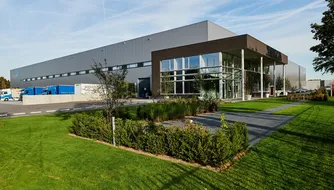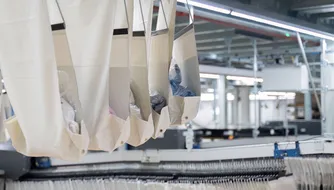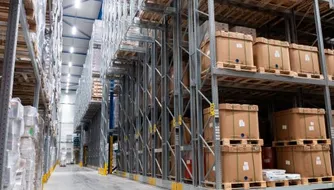Is the warehouse operator of the future digitalized and connected

Pics Belgium organiseert elke laatste donderdag van de maand een virtueel supply chain café. Tijdens dit online gebeuren belicht een specialist gedurende twintig minuten een topic. Daarna kunnen de deelnemers discussIëren over het onderwerp en bepaalde statements. Tot slot trekt de moderator conclusies. Deze publiceren wij in uw Value Chain Content Weekly. Vermits Pics Belgium eveneens franstalige leden telt wordt het verslag door de moderator in het Engels gepubiceerd.
Today warehouses face challenges in choosing the best fit technology for their purposes. There are about 80 automation solutions available that need to be multiplied by the number of suppliers offering them. The drivers for technology adoption are various. E-commerce intensifies the warehouse work, thus increase in number of people in the same physical space potentially creating congestion and potential productivity loss. Same time new technologies allow to decompose tasks, simplify them and reduce skills of workers and increasing the use of temporary labor which impacts flexibility. But these technologies will transform how workers are managed moving into more rigid forms of monitoring and management. This technology is likely to have an uneven impact across demographics and occupations – warehouse workers are often young/female and have often foreign roots – older people will be impacted by productivity targets.
Beside physical automation, the AST-warehouse (Adaptable, Scalable, Transferable) will mainly adopt IOT solutions. More orders, with more orderliness of each lesser quantity and €-value, increase the workload, with less sales value to cover the cost of the handling. This is partly linked to e-commerce, but also to catalogue extension and focus on customer service and speed and flexibility of delivery. Many manual warehouses focus on fast throughput in the warehouse, eliminating waiting times and buffers as much as possible, focusing on speed. In process checking the quality of the work is also a must when looking at these technologies. But same time we need (volume) flexibility in function of workload to be cost competitive during all periods of the year, thus integrating temporary labor for certain tasks.
Technologies used today to connect operators to systems are basically (handheld) terminals with barcode readers, wrist computers with ringscanner, voice solution or pick/drop to light. We typically expect increased productivity, lesser errors and reducing in administrative support using these. MHI states in its 2020 report on technology adaption that technologies such as sensors and automatic identification, robotics and automation, IoT, Wearables and mobile technologies and AGV and drones, besides others, are bound to grow fast in supply chain.
Some of these technologies will disrupt the warehousing industry:
- Blockchain completed with IOT to give transparency
- Integration of smartphones/smartglasses: imaging, tracking, integration recognition and personal assistants (siri like solutions)
- AGV to substitute (certain) forklift movements and assisting picking. Drones for stocktaking.
- Data: anticipate stocks, optimize warehouse capacity and asset utilization
- Wearables real-time connecting people to warehouse technology
- Robotics simplify performance of manual tasks, with much less time and cost and increased efficiency
- Real time visibility and control over inventory with AutoID, positioning, …
Augmented reality solutions such as smartglasses or beamers allow handsfree work and visual operator guidance to get work done, thus increasing both productivity as correctness of action. The technology is also very intuitive and requires short learning curves. Combined with positioning operators can be guided to optimize routing and avoid waiting times and congestion.
The future warehouse operator
There is not one type of warehouse operator. Some processes such as receiving require knowledged workers: people who know which item en location parameter are important and match, that know the layout and the systems. These functions should be filled with fix people. Equipment movements for put-away, replenishment and full pallet picking have safety aspects and require knowledge of the warehouse layout (but not when using positioning and routing). For these fix people and good temporary people can be used. The opportunity for flexible staff typically lays in the picking and packing processes, provided the system can steer and control the operators.
The warehouse operator of the future will, for flexibility reasons, be trained on multiple processes. He will also learn to collaborate with automation and automated equipment, in the same area, sometimes even as part of the process. He will be equipped with wearables to be able to work handsfree, in good ergonomic circumstances, being trained on the job in a very fast way. When using positioning technology and digital compasses the system will be able to register any move, and optimize his work analyzing these. The operator will be routed and stopped where required and instructed to perform any detailed step in the process.
Technology will allow to decrease the skill level requirements for warehouse operators reducing training time and guiding operators in every step of the process. Focus should be on qualitative and timely execution of the job, reducing any risk of error caused by for instance concentration loss. Should people then not be replaced by robots? Probably for certain tasks in the future yes, but humans will still have a role to play. Yes there will be new rigidities caused by technologies, but focus will be on getting things done completely and correctly at an affordable cost. And yes, technology has a payback when improving productivity and thus the manpower required.
Should one not choose for a full automated warehouse? When the potential is there probably yes, but all depends on required peak capacity requirement and stability of the business (products, item and order profiles). Because automation comes with a cost and required longer term stable business in most cases.
Technology is now in a state that one should try things out, think of your strategic focus of the operation and implement what is useful in this context.
Many thanks for those participating to the birth of the Supply Chain Café by PICS Belgium, and hope to talk to you again soon.
Jan De Kimpe


